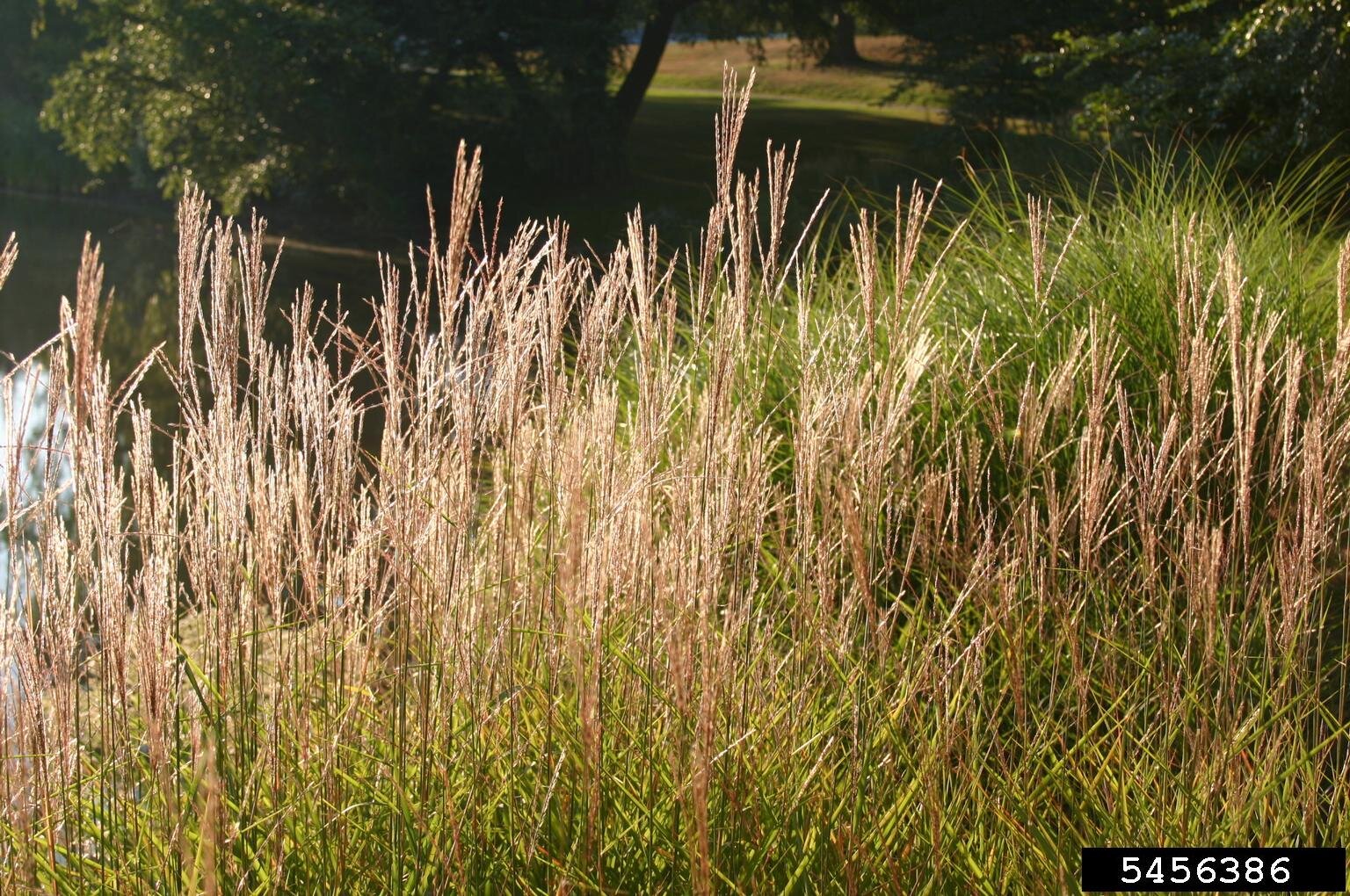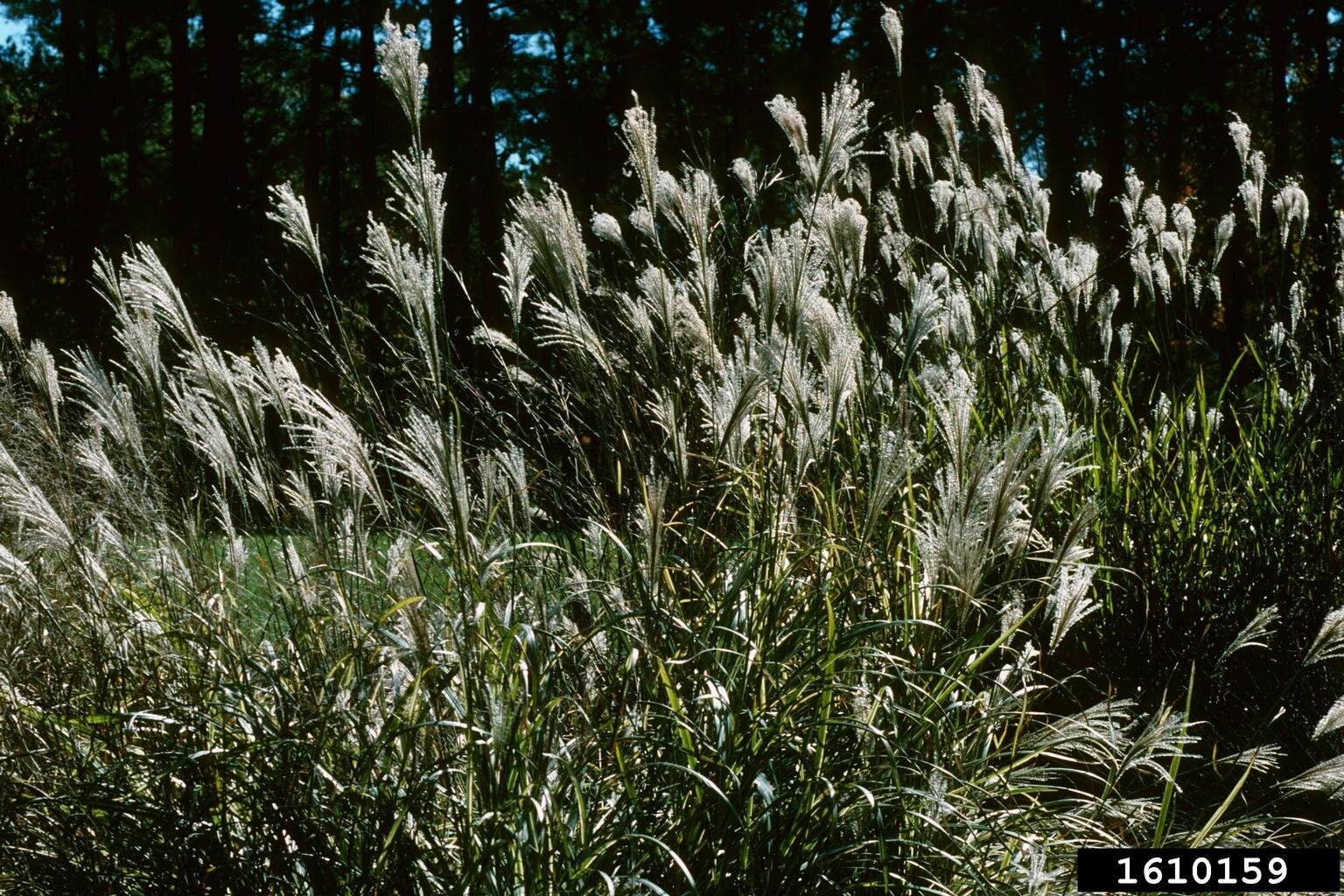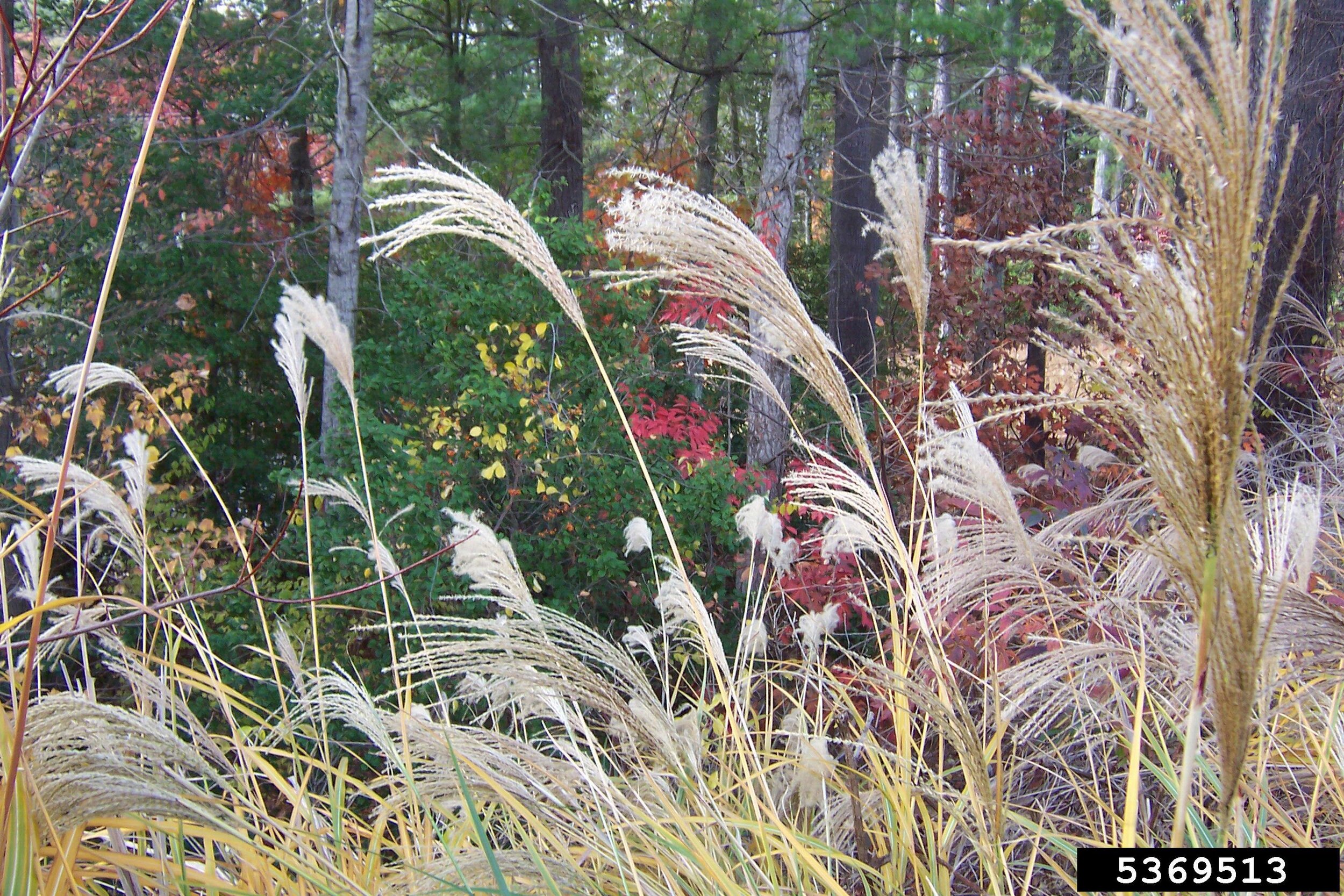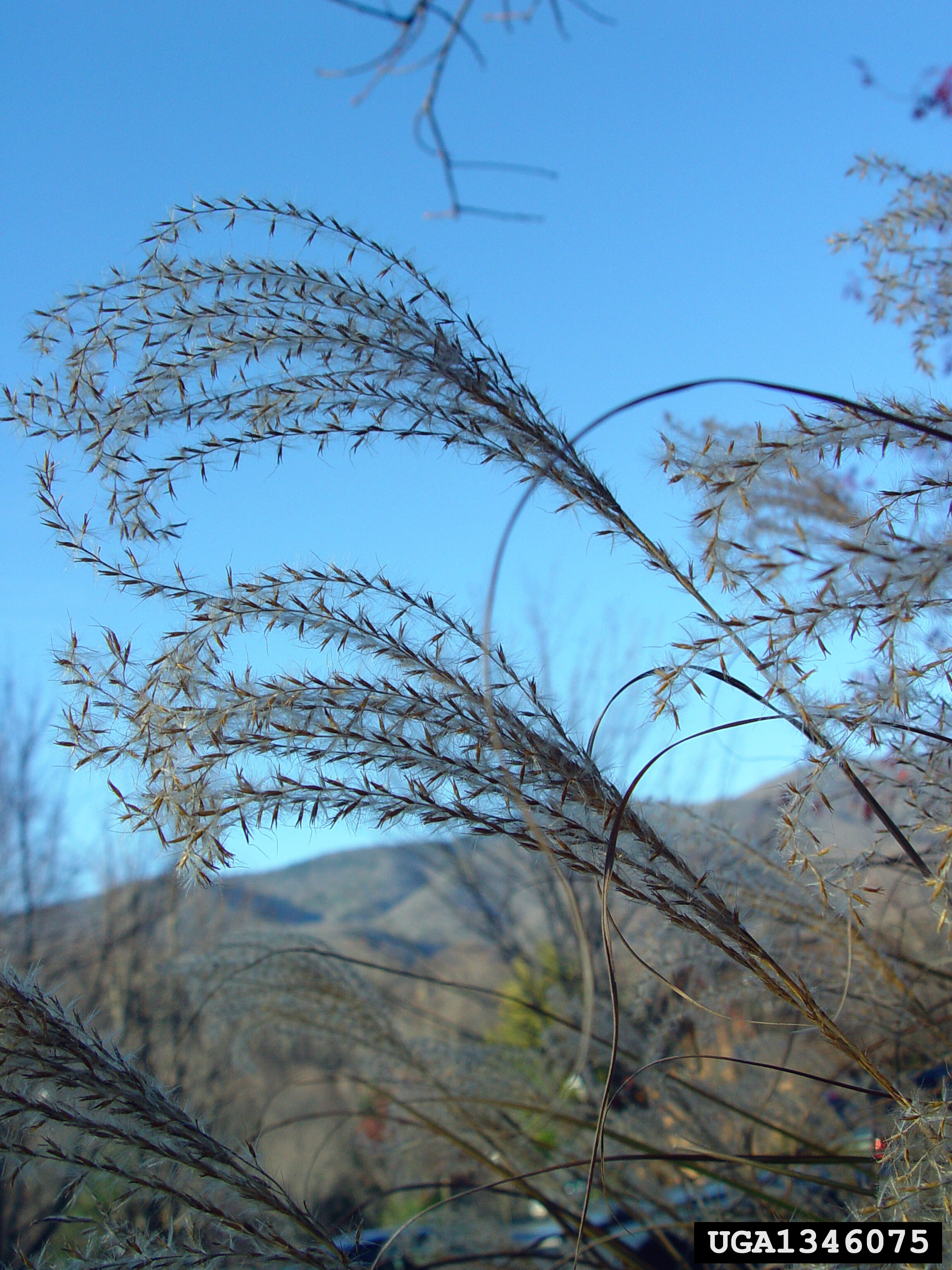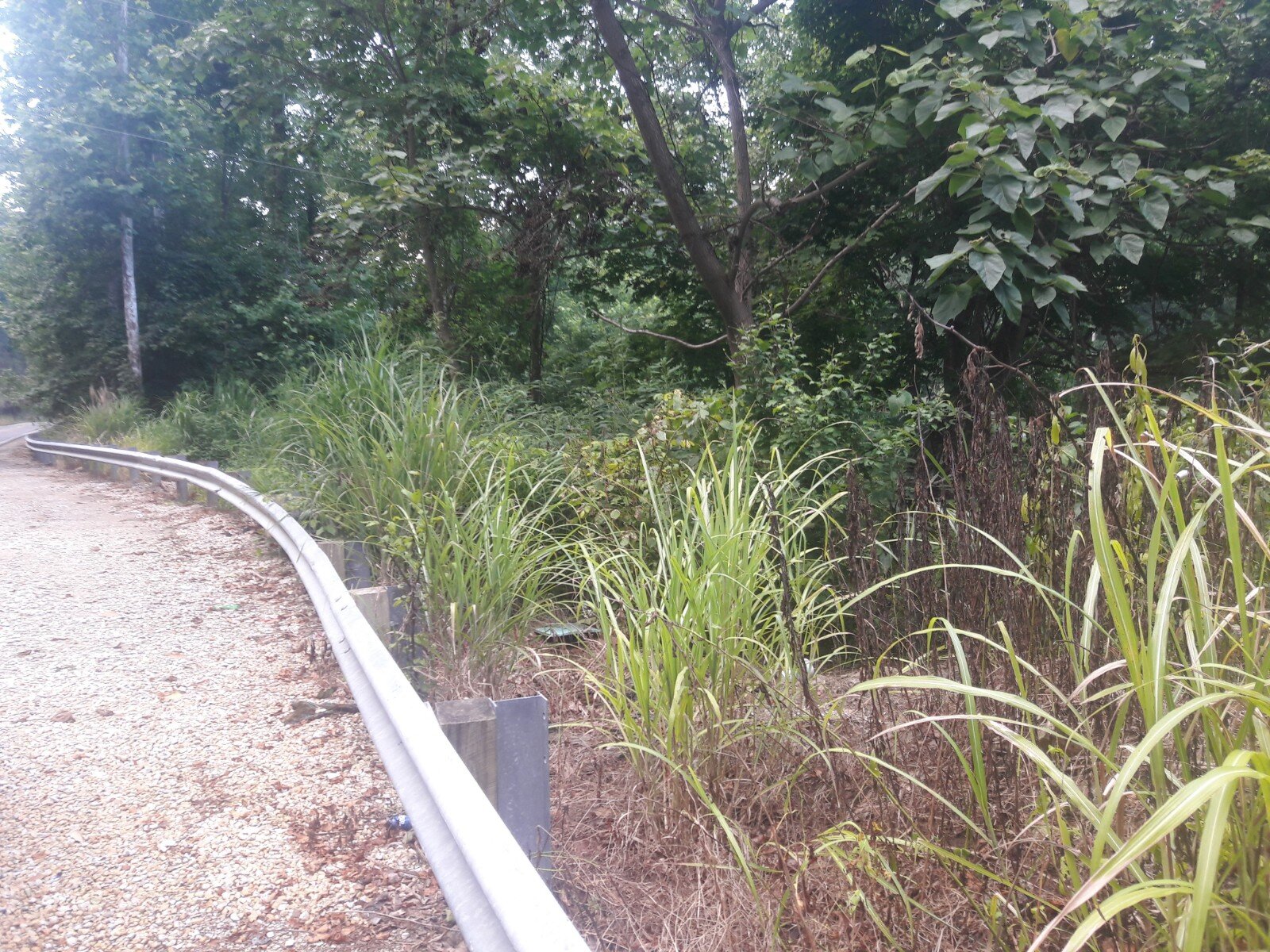November Invasive Plant of the Month
SICIM Email
Chinese silvergrass (Miscanthus sinensis)
Chinese Silvergrass, also called maidenhair grass, zebra grass, Eulalia grass, and Chinese fairy grass, is a member of the Poaceae or grass family. It is native to Asia and is a popular ornamental grass throughout much of the U.S. There are over 100 cultivars including those used for biofuel and paper pulp.
IDENTIFICATION & BIOLOGY: Chinese silvergrass is a perennial clump forming grass with stalked spikelets. The genus name Miscanthus comes from the Greek word mischos meaning stalk and anthos meaning flowers. Basal leaves rise from a central mass and reach 1 to 2 meters (40 inches) long and the entire plant can reach 1.5 to 3 meters in height (5 to 10 feet). Each leaf is sparsely pubescent on both sides with sharp and slightly serrated (rough) margins. Blades are green to variegated with whitish collars. The leaf midvein is white above and green ridged below. Flowers emerge mid-August through early September. These terminal panicles are 10 to 35 centimeters (6 to 24 inches) long on stalks that can reach to 3 meters long. Pale pink to reddish flowers turn tan in fall and will remain through winter. Seeds have a twisted bristle tip and are 3 to 4 millimeters (0.11-0.16 inches) long.
Chinese silvergrass spreads primarily by underground roots and rhizomes. New growth emerges by mid-spring and replaces the previous year’s dried leaves. Miscanthus also spreads by windborne seed produced in fall, which can persist in the seed bank.
LOOK-A-LIKES: There are no native species of the genus Miscanthus in the Eastern US. A possible look-a-like is our native silver plumegrass (Saccharum giganteum) due to its large plume head and arching leaves. Native plumegrass has longer flower stalks that are up to 4 meters (13 feet) long, and the seeds do not have a twisted bristle tip. Leaf blades of native silver plumegrass do not have white midvein.
HABITAT & DISTRIBUTION: Chinese silvergrass will grow in a variety of sites and can tolerate both cold (zone 5) and warm climates (zone 9). It prefers moist, well drained sites and is somewhat shade tolerant, enabling it to persist in forested areas, forest edges and small forest openings. It readily invades disturbed habitats such as abandoned agricultural fields, old field habitats, and/or freshly burned sites. This species is considered a wildland fire hazard due to the large amount of dried fuel it generates in fall.
ECOLOGICAL THREAT: It forms extensive infestations along roadsides, forest edges and disturbed sites. It spread primarily via extensive rhizomes and can create monocultures with extensive perennial root systems that crowd out native forbs and grasses. Miscanthus is extremely flammable. Burning fragments can be blown offsite resulting in difficult to control fires.
CONTROL:
Prevention – In order to limit the spread, discontinue the use of Chinese silvergrass in ornamental landscape plantings and remove it from existing intentional plantings. This species is considered invasive in Indiana but has not been added to the Indiana Terrestrial Plant Rule at this time.
Manual – It is difficult to control manually due to the extensive root system. Disking and cutting are likely to spread rhizome pieces into non-infested areas. Do not mow when seed heads are present. It is recommended to cut, remove, and eradicate (or dispose) of flowers and/or seed heads to limit spread to new sites. Burning has minimal effect and typically stimulates growth.
Chemical – Foliar treatment with systemic herbicides such as glyphosate (non-selective) or imazapyr plus surfactant during the active growing period is effective in fall and/or late spring. Note that use of non-selective herbicide can result in non-target injury if they are sprayed. Mowing or trimming, then allowing Miscanthus to resprout can enhance chemical control and limit the potential for off-target damage. Once cut, allow new growth to reach at least 12 inches tall prior to foliar herbicide application.
IMPORTANT: The pesticide label is the law! When using any chemical control, always read the entire pesticide label carefully, follow all mixing and application instructions and use all personal protective gear and clothing specified. Contact county level Purdue Extension or Office of Indiana State Chemist (OISC) for additional pesticide use requirements, restrictions or recommendations.
Maintenance - Initial control efforts should be monitored regularly over the course of multiple years such that continued chemical and/or manual control of persistent or new infestations may be required.
NATIVE PLANT LANDSCAPE ALTERNATIVES: switchgrass (Panicum virgatum), prairie cordgrass (Spartina pectinata), prairie dropseed (Sporobolus heterolepis), little bluestem (Schizachyrium scoparium), big bluestem (Andropogon gerardii), fox sedge (Carex vulpinoidea), porcupine sedge (Carex hystericina)
CHINESE SILVERGRASS REFERENCES & OTHER RESOURCES:
#ChineseSilvergrass #Miscanthussinensis #MaidenhairGrass #InvasivePlants #IndianaInvasivePlants #IndianaInvasivesInitiative


